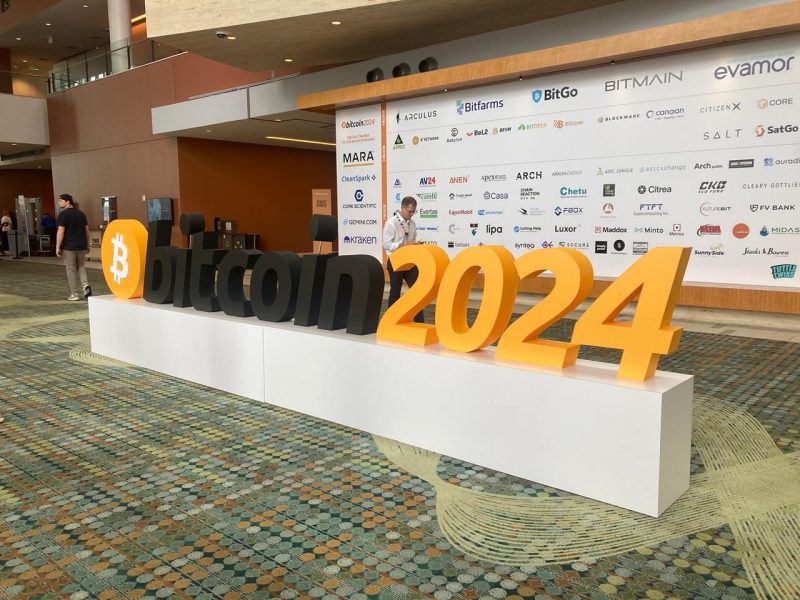Designed to operate on top of the Bitcoin blockchain, layer-2s are emerging rapidly, fueled by years of innovation in the Ethereum ecosystem. Now, they promise to bring decentralized finance (DeFi) solutions to the original blockchain.
Despite locking millions in value onchain in a few months, Bitcoin layer-2s are still in their infancy. As with any early-stage development, there are still challenges to overcome, including security issues and user experience concerns.
At the Bitcoin 2024 conference in Nashville, Tennessee, the Cointelegraph team sat down with protocols that have recently onboarded hundreds of developers to the Bitcoin network. These protocols share a common vision: making the Bitcoin blockchain ecosystem more useful over time.

Franklin Templeton eyes Bitcoin-based yield
Investment manager Franklin Templeton is one of the issuers of Bitcoin exchange-traded funds, but the company also backs emerging layer-2 protocols, such as Bitlayer.
According to Bitlayer co-founder Charlie Hu, the asset manager is now looking at alternatives to unlock yield for its clients through digital assets, specifically through the Bitcoin network. He told Cointelegraph:
“They’re coming. Franklin Templeton is one example. They are actually not just investors. They actually want to use it. They’re sitting on $500 million Bitcoin exposure, and they want to earn more yield for their clients.”
In July, Bitlayer closed an $11 million Series A round led by Templeton and ABCDE. The startup offers a more scalable way to transact on the Bitcoin network, like an additional road for transactions on the blockchain. For developers, this means the possibility of building applications based on the BTC network instead of using Ethereum.
In thenearly three months since its mainnet went live, the protocol amassed $409 million in value locked on its chain, according to DefiLlama. The demand, according to Hu, comes mainly from institutional clients seeking additional revenue from crypto markets:
“They want just different tiers of risk-type appetite of used customers. We provide them with different risks and different reward levels of financial products. […] It’s like more risk reverse. You tap into real-world assets; you tap into this collateral for stablecoins, so that that gives you like 10% to 15% reward, whereas Treasury Bond is like 6%. It’s a way to get more yield, tap into some exposure, but not too risky.”
Security complexities in layer-2s
Ethereum layer-2s and bridges have become a target for hackers and bad actors over the past few years, and Bitcoin layer-2s may also take some time to evolve on this front.
“The big question at the core of this whole security model is how do I get it [tokens] out?,” said Alexei Zamyatin, co-founder of Build On Bitcoin (BOB), in a reference to concerns of wrapping tokens on another layer while keeping the security of the Bitcoin blockchain.

To solve this problem, BOB’s team is contributing to the research of BitVM, a virtual machine designed for executing smart contracts directly on the Bitcoin blockchain. According to Zamyatin, the BitVM system could allow realistic rollups that inherit Bitcoin security:
“We’re contributing to BitvMV on the research side and really hope to see that come to production and allow us to really use Bitcoin on these layers in a way that is really secure […] With things like BitVM, we can guarantee that you can always get it out, as long as there’s one honest node on the Bitcoin network that is being attention.”
Working on Bitcoin research since 2015, Zamyatin co-founded BOB to provide a hybrid solution that combines features from the Bitcoin and the Ethereum blockchains. Since then, the protocol has raised more than $11 million from several investors.
In Zamyatin’s view, layer-2s will allow innovation to come back to Bitcoin in an era when centralized institutions are becoming more prevalent:
“I find it a bit weird and strange that we’re all cheering for the centralized platforms,” he said. “It’s good for price […] but I think we should not forget that […] we will have to innovate [Bitcoin] now to ensure that we have an alternative.”
Gaming, NFTs, and everything Bitcoin
Protocols working on the Bitcoin network have a clear goal: close the utility gap between the first cryptocurrency and other layer-1 blockchains, like Ethereum. In other words, build an alternative for crypto-based games, non-fungible tokens (NFTs), and protocols that currently exist somewhere else onchain.
“I think Bitcoin is the entry point for the non-crypto world, right? Everyone hears Bitcoin first of Ethereum. I think Bitcoin can be the entry point, so everyone will buy Bitcoin or USDT first, not Ethereum,” B² network co-founder, known as Calvin, told Cointelegraph.
The protocol offers a data availability layer on the Bitcoin blockchain, a critical component for the security of decentralized applications. This layer ensures that the necessary data for validating transactions is available to all nodes in a network. In a blockchain-based game, for instance, this data layer could ensure that player interactions and in-game asset movements are stored in a decentralized manner.
Having a dedicated layer for NFT transactions could have avoided the network congestion seen in 2023 during the rise of the Ordinals protocol. At the time, the trading volume coming from Ordinals’ innovation — seen by some as a vulnerability — led to a dramatic increase in fees on the BTC blockchain.
“We are going to continue building this scaling Bitcoin architecture and decentralize all the unsecured parts. […] So there’s a big focus like building the infrastructure now, adding those layers of security and then onboarding people after that,” said Calvin.
Source: https://cointelegraph.com/news/everything-bitcoin-layer-2s-adoption-security



